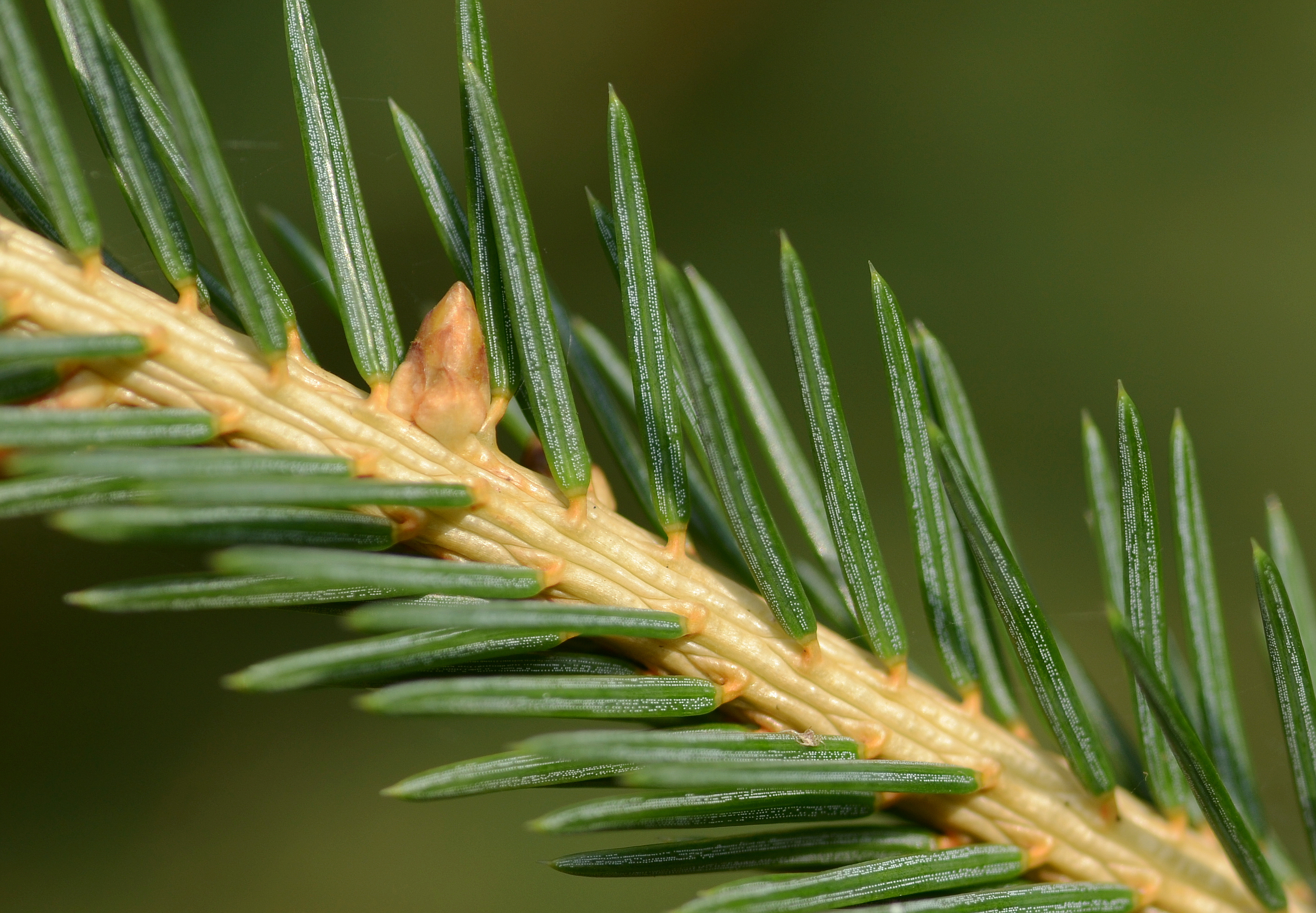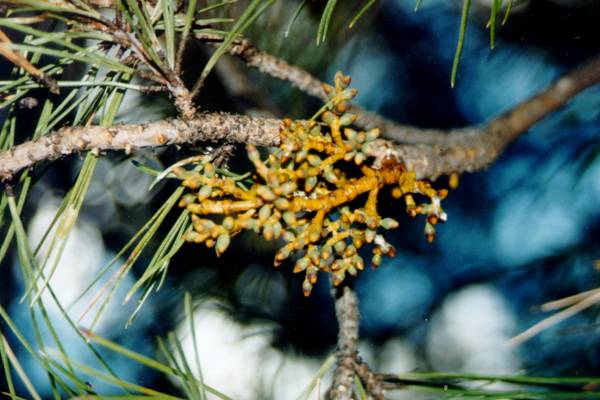|
Arceuthobium Microcarpum
''Arceuthobium microcarpum'', called the "western spruce dwarf mistletoe," is a parasitic plant known only from Arizona and New Mexico. It is found mostly on spruce trees (''Picea'' spp.) but also occasionally on Rocky Mountain bristlecone pine ''Pinus aristata'', the Rocky Mountain bristlecone pine (or the Colorado bristlecone pine), is a long-living species of bristlecone pine tree native to the United States. It appears in the Rocky Mountains in Colorado and northern New Mexico, wit ... ('' Pinus aristata'' Engelm.). The specific epithet "''microcarpum''" means "small fruited," in reference to the berries, which are only 3.5 mm long. ''Arceuthobium microcarpum'' (Engelm.) Hawksw. & Wiens, Brittonia 22(3): 268. 1970. = ''Arceuthobium douglasii'' var. ''microcarpum'' Engelm. in Rothr., Rep. U.S. Geogr. Surv., Wheeler vol. 6, Botany 253. 1879. = ''Arceuthobium campylopodum'' subsp. ''microcarpum'' (Engelm.) Nickrent, Phytoneuron 2012–51: 10. 2012. = ''Razoumofskya mic ... [...More Info...] [...Related Items...] OR: [Wikipedia] [Google] [Baidu] |
Arizona
Arizona ( ; nv, Hoozdo Hahoodzo ; ood, Alĭ ṣonak ) is a U.S. state, state in the Southwestern United States. It is the list of U.S. states and territories by area, 6th largest and the list of U.S. states and territories by population, 14th most populous of the 50 states. Its capital city, capital and List of largest cities, largest city is Phoenix, Arizona, Phoenix. Arizona is part of the Four Corners region with Utah to the north, Colorado to the northeast, and New Mexico to the east; its other neighboring states are Nevada to the northwest, California to the west and the List of states of Mexico, Mexican states of Sonora and Baja California (state), Baja California to the south and southwest. Arizona is the 48th state and last of the contiguous United States, contiguous states to be admitted to the Union, achieving statehood on February 14, 1912. Historically part of the territory of in New Spain, it became part of independent Mexico in 1821. After being defeated in th ... [...More Info...] [...Related Items...] OR: [Wikipedia] [Google] [Baidu] |
New Mexico
) , population_demonym = New Mexican ( es, Neomexicano, Neomejicano, Nuevo Mexicano) , seat = Santa Fe, New Mexico, Santa Fe , LargestCity = Albuquerque, New Mexico, Albuquerque , LargestMetro = Albuquerque metropolitan area, Tiguex , OfficialLang = None , Languages = English language, English, Spanish language, Spanish (New Mexican Spanish, New Mexican), Navajo language, Navajo, Keres language, Keres, Zuni language, Zuni , Governor = , Lieutenant Governor = , Legislature = New Mexico Legislature , Upperhouse = New Mexico Senate, Senate , Lowerhouse = New Mexico House of Representatives, House of Representatives , Judiciary = New Mexico Supreme Court , Senators = * * , Representative = * * * , postal_code = NM , TradAbbreviation = N.M., N.Mex. , area_rank = 5th , area_total_sq_mi = 121,591 , area_total_km2 = 314,915 , area_land_sq_mi = 121,298 , area_land_km2 = 314,161 , area_water_sq_mi = 292 , area_water_km2 = 757 , area_water_percent = 0.24 , ... [...More Info...] [...Related Items...] OR: [Wikipedia] [Google] [Baidu] |
Picea
A spruce is a tree of the genus ''Picea'' (), a genus of about 35 species of coniferous evergreen trees in the family Pinaceae, found in the northern temperate and boreal (taiga) regions of the Earth. ''Picea'' is the sole genus in the subfamily Piceoideae. Spruces are large trees, from about 20 to 60 m (about 60–200 ft) tall when mature, and have whorled branches and conical form. They can be distinguished from other members of the pine family by their needles (leaves), which are four-sided and attached singly to small persistent peg-like structures ( pulvini or sterigmata) on the branches, and by their cones (without any protruding bracts), which hang downwards after they are pollinated. The needles are shed when 4–10 years old, leaving the branches rough with the retained pegs. In other similar genera, the branches are fairly smooth. Spruce are used as food plants by the larvae of some Lepidoptera (moth and butterfly) species, such as the eastern spruce ... [...More Info...] [...Related Items...] OR: [Wikipedia] [Google] [Baidu] |
Bristlecone Pine
The term bristlecone pine covers three species of pine tree (family Pinaceae, genus ''Pinus'', subsection ''Balfourianae''). All three species are long-lived and highly resilient to harsh weather and bad soils. One of the three species, ''Pinus longaeva'', is among the longest-lived life forms on Earth. The oldest of this species is more than 4,800 years old, making it the oldest known individual of any species. Despite their potential age and low reproductive rate, bristlecone pines, particularly ''Pinus longaeva'', are usually a first-succession species, tending to occupy new open ground. They generally compete poorly in less-than-harsh environments, making them hard to cultivate. In gardens, they succumb quickly to root rot. They do very well, however, where most other plants cannot even grow, such as in rocky dolomitic soils in areas with virtually no rainfall. Bristlecone pines grow in scattered subalpine groves at high altitude in arid regions of the Western United State ... [...More Info...] [...Related Items...] OR: [Wikipedia] [Google] [Baidu] |
Pinus Aristata
''Pinus aristata'', the Rocky Mountain bristlecone pine (or the Colorado bristlecone pine), is a long-living species of bristlecone pine tree native to the United States. It appears in the Rocky Mountains in Colorado and northern New Mexico, with isolated populations in the San Francisco Peaks in Arizona and the Kaibab National Forest north of the Grand Canyon. It is usually found at very high altitudes, from , in cold, dry subalpine climate conditions, often at the tree line, although it also forms extensive closed-canopy stands at somewhat lower elevations. Description ''Pinus aristata'' is a medium-size tree, reaching high and wide. Mature trunk diameter is highly variable. The bark is grey-brown, thin and scaly at the base of the trunk. The leaves ('needles') are in fascicles of five, stout, long, deep green to blue-green on the outer face, with stomata confined to a bright white band on the inner surfaces. The cones are ovoid-cylindrical, long and broad when closed, ... [...More Info...] [...Related Items...] OR: [Wikipedia] [Google] [Baidu] |
Arceuthobium
The genus ''Arceuthobium'', commonly called dwarf mistletoes, is a genus of 26 species of parasitic plants that parasitize members of Pinaceae and Cupressaceae in North America, Central America, Asia, Europe, and Africa. Of the 42 species that have been recognized, 39 and 21 of these are endemic to North America and the United States, respectively. They all have very reduced shoots and leaves (mostly reduced to scales) with the bulk of the plant living under the host's bark. Recently the number of species within the genus has been reduced to 26 as a result of more detailed genetic analysis. Description They are dioecious, individual plants being either male or female. The fruit is unusual in that it builds up hydrostatic pressure internally when ripe and shoots the single sticky seed up to speeds nearly , an example of rapid plant movement. The lodgepole pine dwarf mistletoe,'' Arceuthobium americanum, has been found to explosively-disperse its seeds through thermogenesis ... [...More Info...] [...Related Items...] OR: [Wikipedia] [Google] [Baidu] |
Parasitic Plants
A parasitic plant is a plant that derives some or all of its nutritional requirements from another living plant. They make up about 1% of angiosperms and are found in almost every biome. All parasitic plants develop a specialized organ called the haustorium, which penetrates the host plant, connecting them to the host vasculature – either the xylem, phloem, or both. For example, plants like ''Striga'' or '' Rhinanthus'' connect only to the xylem, via xylem bridges (xylem-feeding). Alternately, plants like ''Cuscuta'' and some members of ''Orobanche'' connect to both the xylem and phloem of the host. This provides them with the ability to extract water and nutrients from the host. Parasitic plants are classified depending on the location where the parasitic plant latches onto the host (root or stem), the amount of nutrients it requires, and their photosynthetic capability. Some parasitic plants can locate their host plants by detecting volatile chemicals in the air or soil give ... [...More Info...] [...Related Items...] OR: [Wikipedia] [Google] [Baidu] |
Flora Of Arizona
Flora (: floras or florae) is all the plant life present in a particular region or time, generally the naturally occurring ( indigenous) native plants. The corresponding term for animals is ''fauna'', and for fungi, it is '' funga''. Sometimes bacteria and fungi are also referred to as flora as in the terms ''gut flora'' or ''skin flora''. Etymology The word "flora" comes from the Latin name of Flora, the goddess of plants, flowers, and fertility in Roman mythology. The technical term "flora" is then derived from a metonymy of this goddess at the end of the sixteenth century. It was first used in poetry to denote the natural vegetation of an area, but soon also assumed the meaning of a work cataloguing such vegetation. Moreover, "Flora" was used to refer to the flowers of an artificial garden in the seventeenth century. The distinction between vegetation (the general appearance of a community) and flora (the taxonomic composition of a community) was first made by Jules Thurm ... [...More Info...] [...Related Items...] OR: [Wikipedia] [Google] [Baidu] |




